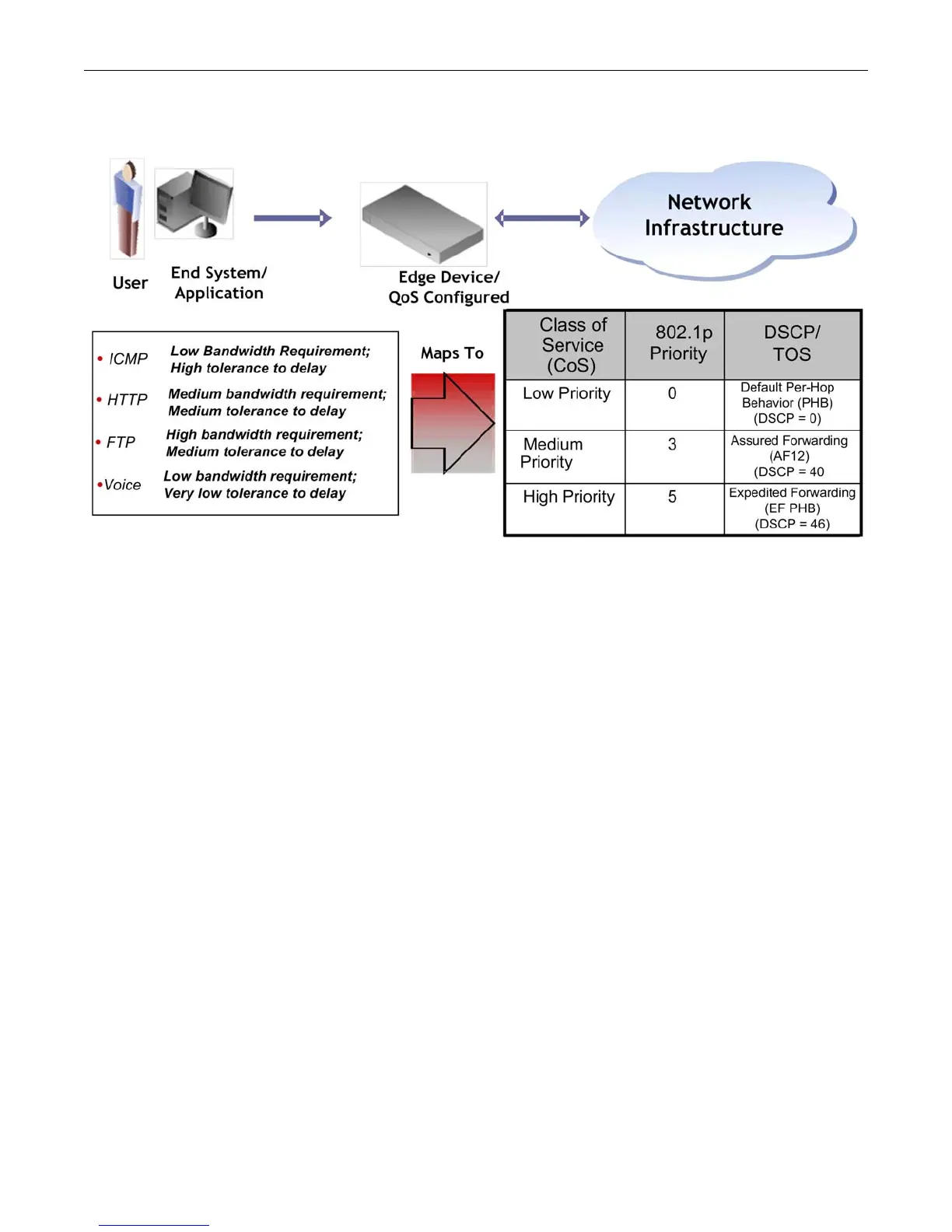Quality of Service Overview
17-4 Configuring Quality of Service
• Is propagated through the network in the protocol packet header
Figure 17-1 Assigning and Marking Traffic with a Priority
The ICMP protocol, used for error messaging, has a low bandwidth requirement, with a high
tolerance for delay and jitter, and is appropriate for a low priority setting. HTTP and FTP
protocols, used respectively for browser-generated and file transfer traffic, have a medium to high
bandwidth requirement, with a medium to high tolerance for delay and jitter, and are appropriate
for a medium priority level. Voice (VoIP), used for voice calls, has a low bandwidth requirement,
but is very sensitive to delay and jitter and is appropriate for a high priority level.
See RFC 1349 for further details on ToS. See RFCs 2474 and 2475 for further details on DSCP.
CoS Reference
Use the CoS reference configuration if you need to map a CoS setting IRL reference to an IRL port
resource rate limiter.
The CoS reference configuration is set by specifying the type of hardware resource for the
reference (IRL), the port group the reference is being applied to, and the hardware resource
reference configured in CoS settings, and the actual rate limiting port resource for this mapping.
Port Group and Type
CoS port groups provide for grouping ports by CoS feature configuration and port type. Ports are
required to be configured by groups — this feature provides a meaningful way of identifying
ports by similar functionality and port type.
Groups consist of a group number and port type and are numbered as such, port-group.port-type.
The port group number is configurable. A port on a fixed switch platform is always port type 0.
For example: port group 0, port type 0 would be numbered port group 0.0. A default port group
exists per hardware resource: IR and flood control. The default port group is identified as port
group 0 and port type 0 and is indexed as 0.0 for each feature. These default port groups cannot be
removed and all physical ports in the system are assigned to one port group for each feature.

